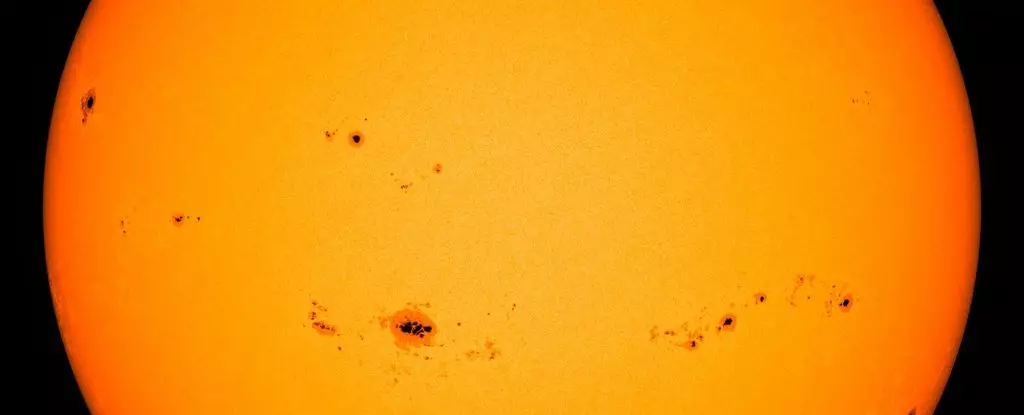Recent declarations from NASA, the National Oceanic and Atmospheric Administration (NOAA), and the Solar Cycle Prediction Panel herald a significant moment in our solar system: we are officially in a period of solar maximum. This event marks the peak of the Sun’s approximately 11-year activity cycle, a phase characterized by heightened solar phenomena, including sunspots, solar flares, and coronal mass ejections. As we venture deeper into this period, we can anticipate an increase in solar activities that may have far-reaching effects on both our technology and natural phenomena on Earth.
While it may be exhilarating to witness such cosmic vigor, it’s important to delineate what solar maximum entails. The Sun, our vital energy source, undergoes fluctuations that are not just a backdrop to our lives, but significant events that can influence technology and atmosphere. In the coming months, we may experience a plethora of solar activities, including the destructive potential of solar flares and the magnificent allure of auroras as coronal mass ejections interact with Earth’s magnetic field.
Despite our civilization’s advancements in technology and knowledge, one element remains stubbornly elusive: the precise mechanics of solar cycles. Meteorologist Elsayed Talaat from NOAA emphasizes that while we are currently observing solar maximum, pinpointing when the cycle will peak is an uncertain endeavor that may take months, if not years, to clarify. The erratic nature of solar cycles makes it inherently challenging for scientists to develop a reliable predictive model for these phenomena.
Astrophysicist Michael Wheatland highlights that our understanding of solar activity is far from complete. The solar dynamo theory, which postulates how the magnetic fields responsible for sunspots are generated, remains an unresolved problem within astrophysics. While we can observe and understand manifestations of solar cycles—such as the formation of sunspots—comprehensive models that predict their timing and intensity are still evolving.
Sunspots serve as the primary metric for assessing solar cycle activity. They are regions where magnetic forces disrupt the flow of hot plasma, cooling the area and rendering it darker compared to its surroundings. During solar maximum, these spots proliferate like freckles across the face of the Sun, facilitating massive solar outbursts when the tangled magnetic lines snap and release energy in the form of solar flares. These flares can disrupt radio communications on Earth, leading to temporary blackouts.
Moreover, when substantial quantities of solar particles are expelled from the Sun in the form of coronal mass ejections, these can trigger geomagnetic storms upon colliding with Earth’s magnetic field. Such storms can disrupt power grid operations and navigation systems, but they also generate stunning auroras, lighting up the skies in beautiful displays.
Despite these challenges, the current solar cycle, while stronger than initially predicted, is not unprecedented. The most significant flare recorded in this cycle occurred on October 4, reaching an intensity of X9.0. However, this is far from the strongest flare ever observed. The historical record contains even mightier flares that we have managed to endure without severe consequences.
Interestingly, while the standard predictions for this solar cycle underestimated its intensity, some scientists had anticipated a stronger cycle, reflecting a need to reassess the models used for forecasting solar activity. This recalibration could lead to more robust predictive tools, enhancing our understanding of the Sun and its cycles in the future.
As we move forward, it’s essential to prepare for the possibility of stormy space weather while fostering curiosity about the processes that drive our star’s behavior. Through diligent observation and research, we strive to untangle the mysteries that the Sun presents.
While the Earth’s technological infrastructure faces risks during solar maximum, the beauty of the solar phenomena reminds us of our connection to the cosmos. By continuing to study these cyclical changes, we may uncover invaluable insights that enhance our understanding of the universe and our place within it. So prepare yourselves for not only potential disruption but also breathtaking solar displays that connect us to the power and wonder of our magnificent Sun.


Leave a Reply